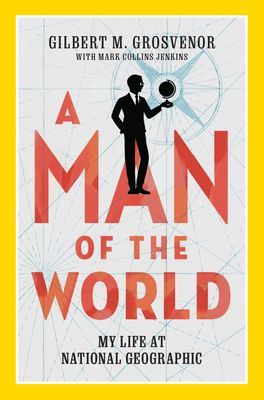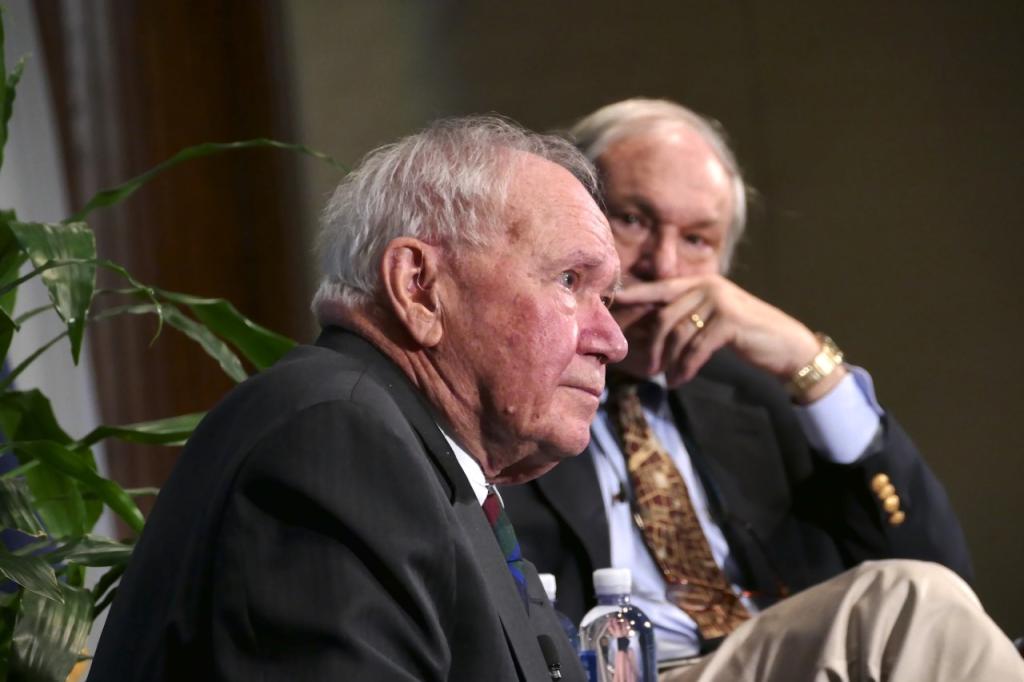For Gilbert Grosvenor, running National Geographic was a legacy, motivated by a passion to leave the world a better place.
-
Winter 2023
Volume68Issue1

Gilbert Grosvenor, the former Editor and Chairman of National Geographic, has published a revealing autobiography describing feats of exploration, from Jane Goodall's field studies to the successful hunt for the Titanic. Offering a rare portrait of one of the world's most iconic media empires, A Man of the World: My Life at National Geographic, makes an impassioned argument to know – and care for – our planet.
When he was in college, Grosvenor intended to go into medicine. But that changed after he wrote an article for National Geographic about volunteering after the terrible 1953 flood in the Netherlands. “I discovered that few people knew about the Netherlands, and the article had a real impact,” he said. “I realized the power of journalism to educate, to inform.”
Grosvenor recalled how his grandfather, Gilbert H. Grosvenor, had taken over the magazine as its first employee when it had only 900 members. Known as “GHG,” he edited it for 50 years and built the Society to a worldwide organization with over a million members.
But by the 1950s, the magazine needed “a fresh breath,” recalled Grosvenor. His father, Melville Bell Grosvenor, became editor and “shook the whole place like a terrier.”
“MBG” hired new staff and brought in professional photographers, and they became the core of the modern Geographic. He also launched television programming, books, and educational media. When the magazine faced a shortfall, he gained more revenue from new products, rather than cutting costs and staff.
Watch an interview of Gil Grosvenor at the National Press Club.
Drawing from his rich career, Gil Grosvenor shares a number of stories about his challenges as a writer. When he interviewed Marshall Tito of Yugoslavia, who asked about his cameras, Grosvenor reached to take a telephoto lens with the gunstock out of his case, but was immediately pinned to the ground by two bodyguards who came out from behind a hedge.
He also recalled some harrowing moments. When he was covering the start of the Tall Ships race leaving Bermuda, the engine of his chartered plane conked out. The pilot yelled, “Mayday,” and told the two passengers to put on their lifejackets. Grosvenor looked at his photographer, Joe Scherschel, and saw that he was taping his film to his lifejacket, instead of putting it on himself. “That was when I learned the difference between an editor and a photographer,” he said.

He shares his story about diving under the Arctic ice shelf. In the early part of the 20th century, National Geographic had helped fund Adm. Robert E. Peary’s quest to be the first person to reach the North Pole.
“I knew I wanted to do one thing: I wanted to walk upside down under the ice, and that wasn’t easy,” he said. “I had gotten a postcard from my father saying he had flown over the footsteps of Peary. So, I wanted to do one better. I sent him a postcard saying I had walked beneath the footsteps of Robert E. Peary.”
Gilbert M. Grosvenor left his own mark on the Society. As staff photographer, editor in chief, and then president of the organization, Grosvenor oversaw more diversification, and the flagship magazine reached a peak circulation of nearly 11 million. He also credits the Society’s success to the hard work and loyalty of its “family.”
For Grosvenor, running National Geographic wasn’t just a job. It was a legacy, motivated by a passion not just to leave the world a better place, but to motivate others to do so, too.

